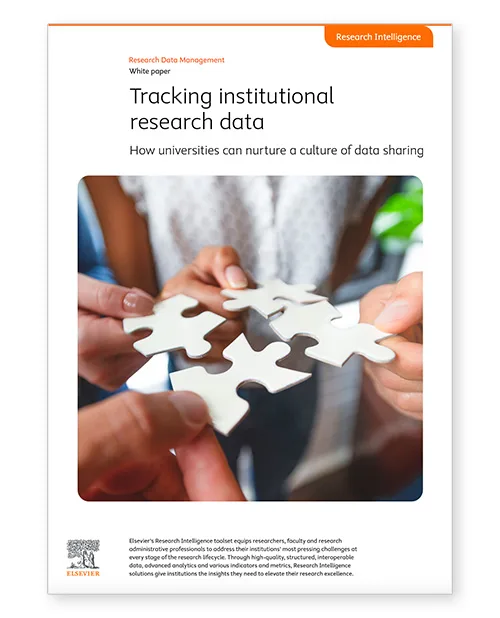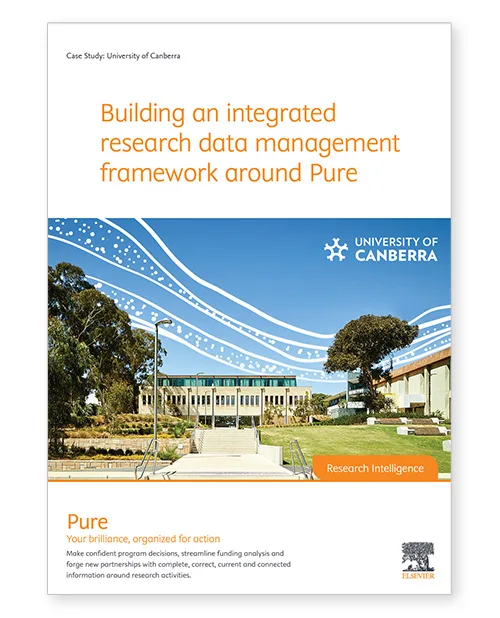Ready to find out how it works for your institution?

Votre navigateur n’est malheureusement pas entièrement pris en charge. Si vous avez la possibilité de le faire, veuillez passer à une version plus récente ou utiliser Mozilla Firefox, Microsoft Edge, Google Chrome, ou Safari 14 ou plus récent. Si vous n’y parvenez pas et que vous avez besoin d’aide, veuillez nous faire part de vos commentaires.
Nous vous serions reconnaissants de nous faire part de vos commentaires sur cette nouvelle expérience.Faites-nous part de votre opinion S’ouvre dans une nouvelle fenêtre
With today’s high level of interest in research integrity, transparency and openness, reinforced by policies sharing this direction, research data is rapidly rising up the agenda and now it’s time for action. Find out how to elevate your research excellence with Elsevier’s Research Intelligence toolset.
Read the whitepaper now S’ouvre dans une nouvelle fenêtre
Use cases for research tracking S’ouvre dans une nouvelle fenêtre

Discover what the University of Canberra did in response to The Australian Code for the Responsible Conduct of Research which came into effect in 2019 and dictated principles of how data is stored, accessed and shared, and laid the onus of compliance on institutions and individual researchers.
Download the University of Canberra case study S’ouvre dans une nouvelle fenêtre

10 things I wish I had known before my institution introduced RDM
Download the fact sheet for librarians S’ouvre dans une nouvelle fenêtre

6 great reasons you should engage with research data management
Download the fact sheet for researchers S’ouvre dans une nouvelle fenêtre

This work illustrates how clustering of author communities can be improved by using metadata about the authors (such as subject area or institutional affiliation) to supplement network structure based on co-authorship or citation relationships. Using such metadata can improve clustering significantly, both in terms of human interpretability and by allowing detection of smaller groups – but weighting metadata too highly in relation to network structure can be detrimental.

